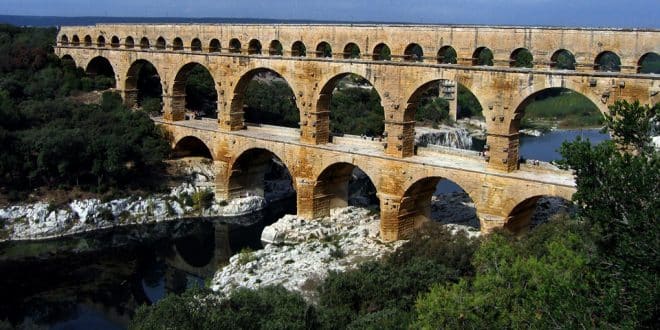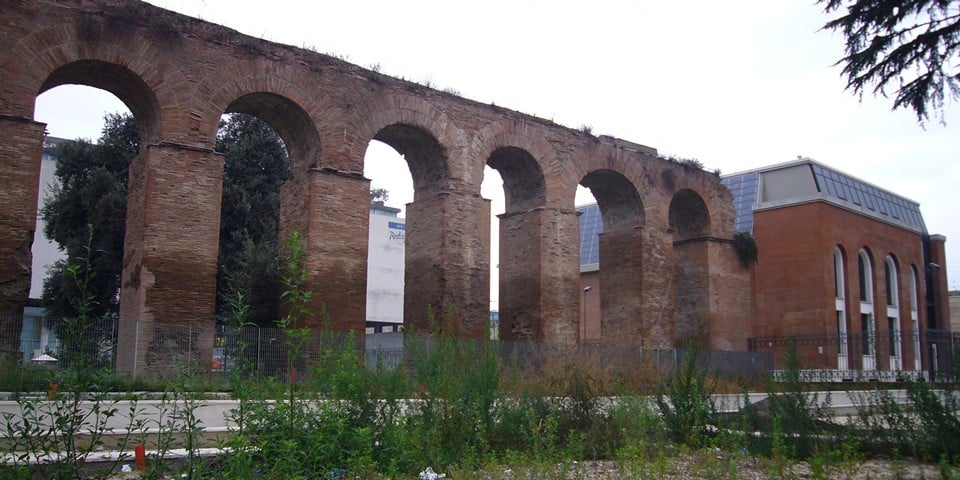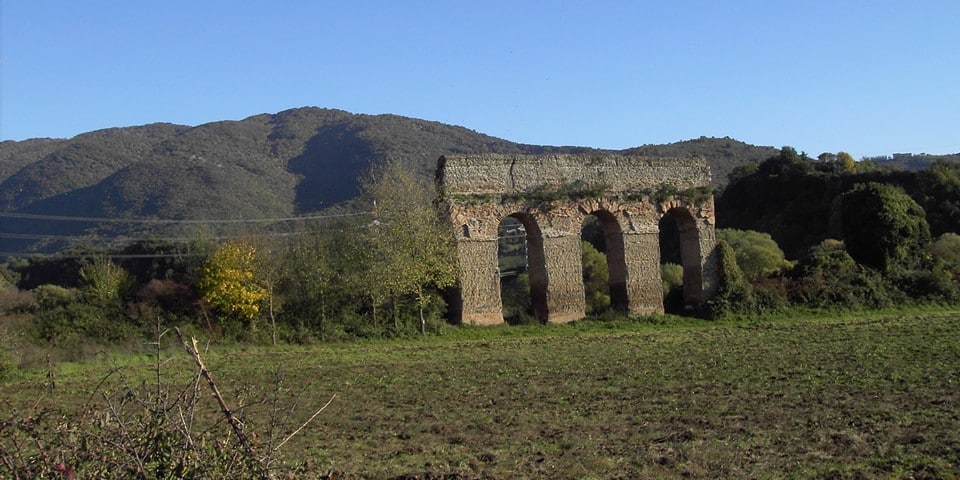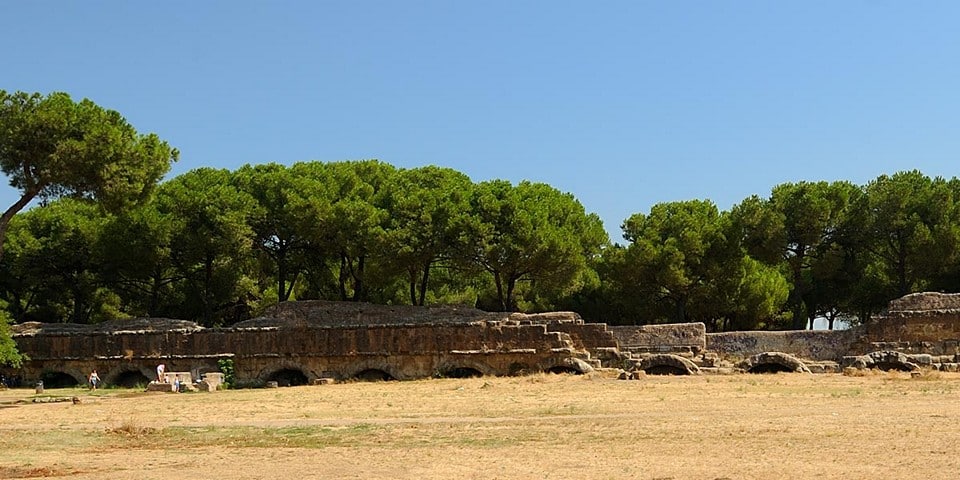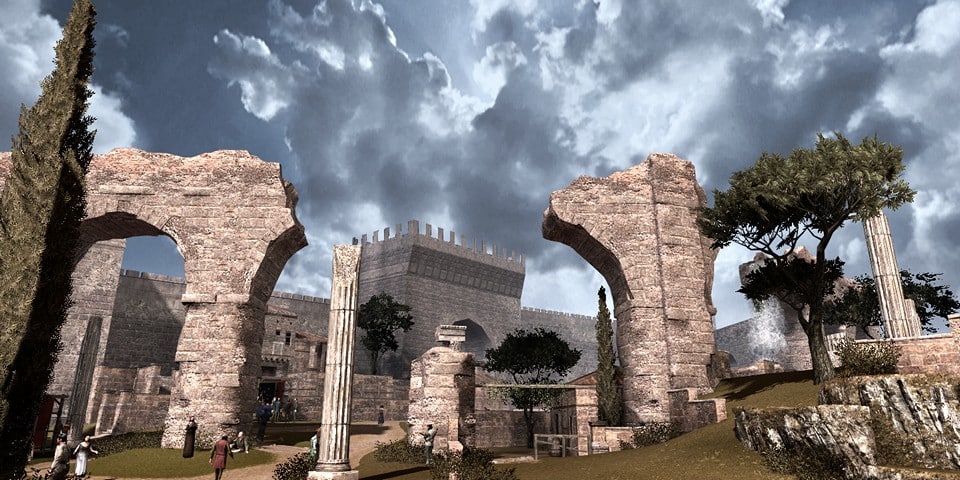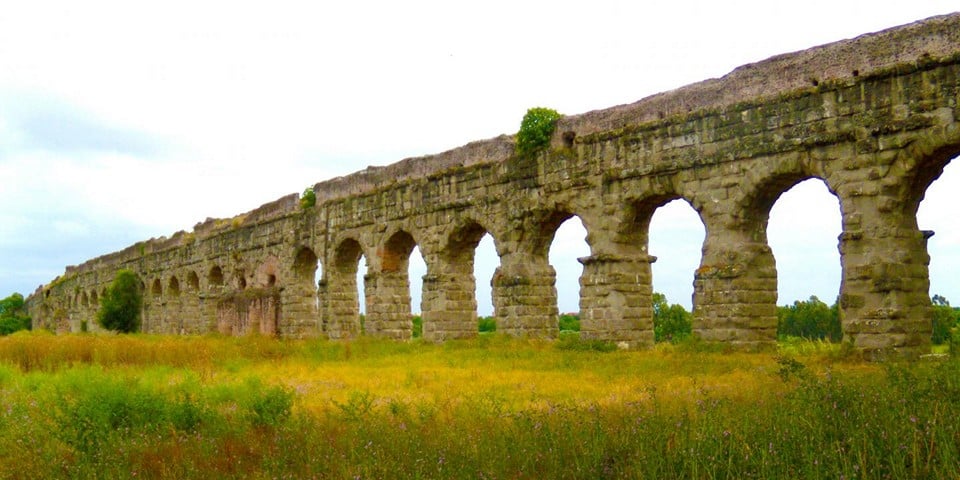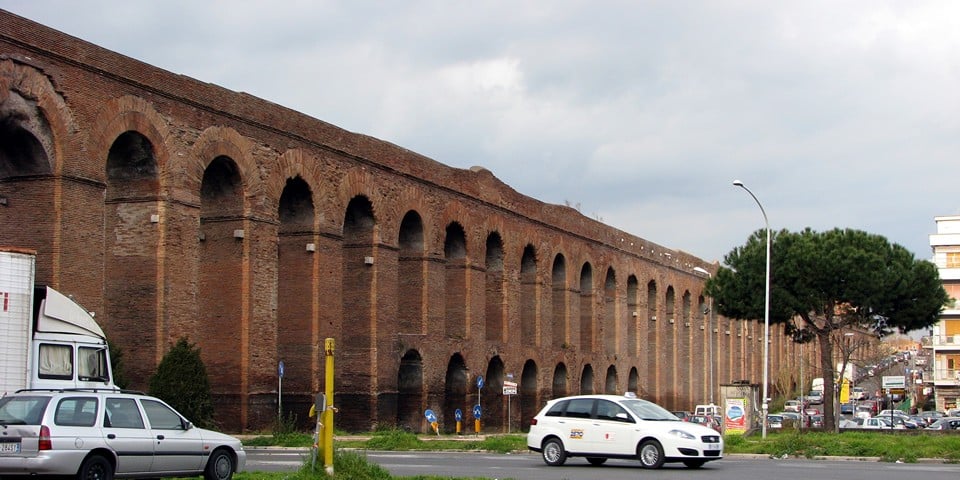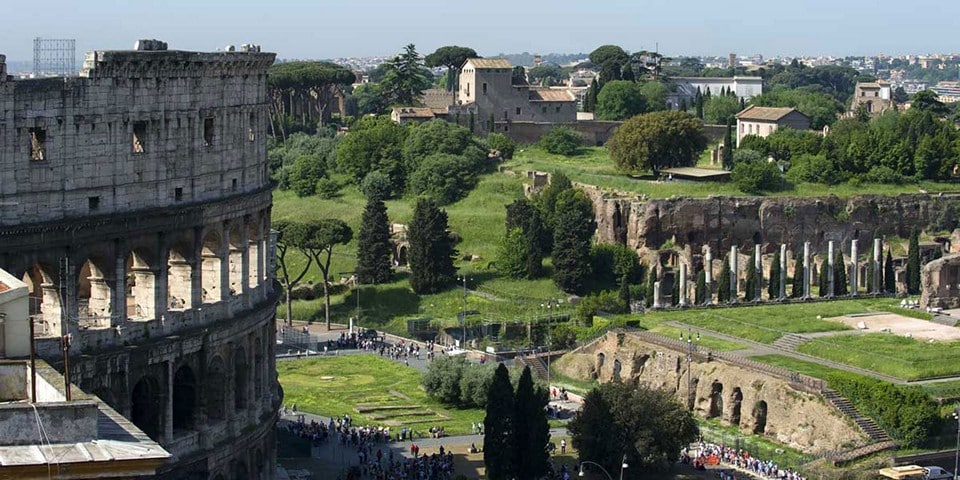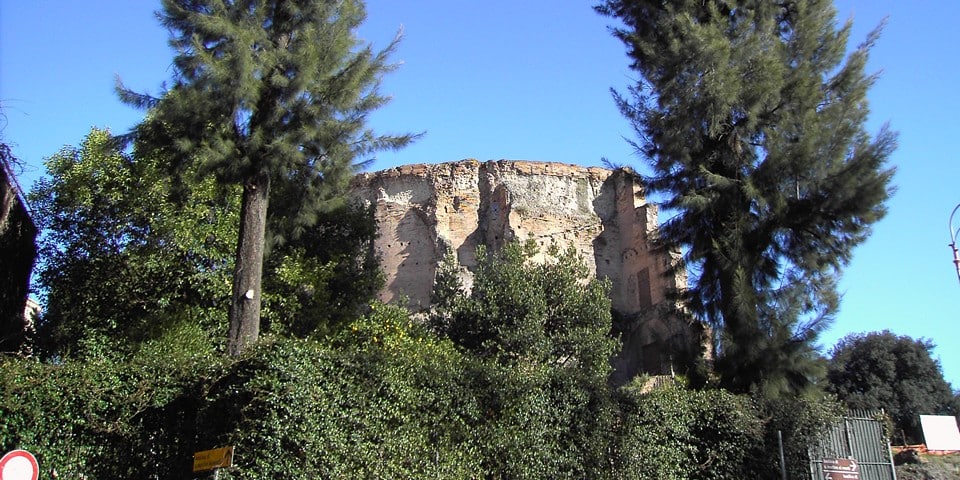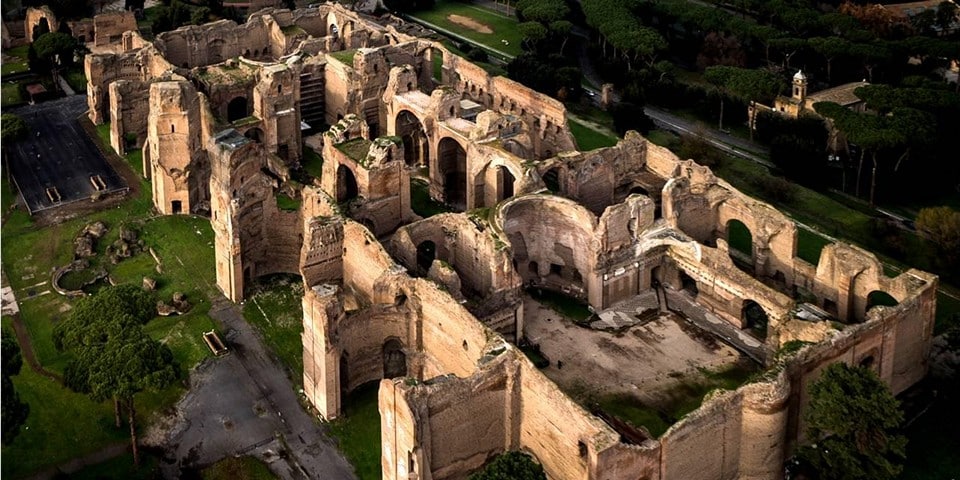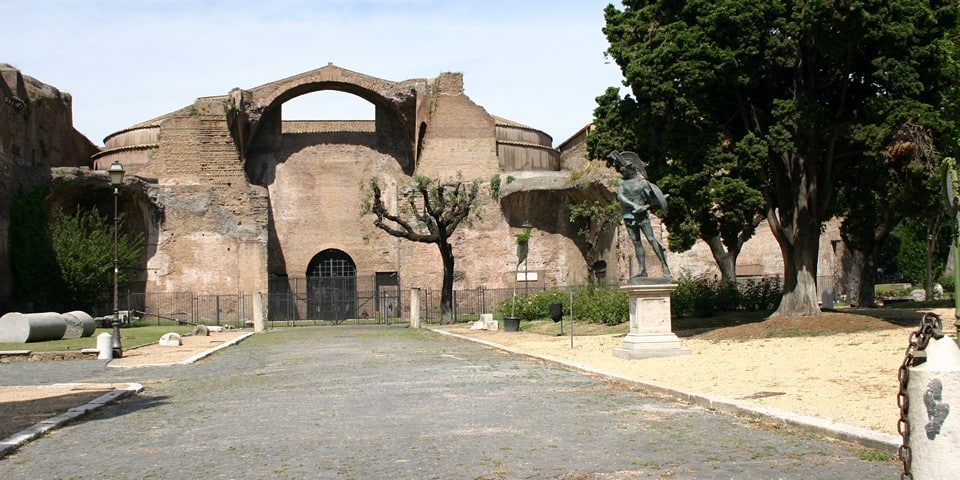Water in ancient Rome was an integral part of city life. The fountains that adorned the cities, the baths where Romans maintained bodily cleanliness and found solace for their souls, and the Naumachiae (mock naval battles) that staged ship battles – all of these required the city to be supplied with a tremendous amount of water. Roman emperors, seeking to meet the needs of their citizens, earn their support, and beautify the Eternal City, spared no resources in constructing aqueduct systems.
Page Contents
Aqueducts
Principle of Operation and Purpose
Essentially, aqueducts were a system of irrigation channels laid out across various landscapes. Water from the source flowed into the aqueduct, then into a special reservoir called a “castellum,” and was distributed through pipes to the city. If the aqueduct was not built underground, it was incorporated into arched spans and covered to preserve the water’s cleanliness.
The process went as follows: first, the endpoint of the aqueduct was determined, and then, moving from the endpoint to the starting point, the topography of the area was surveyed, recording the terrain and selecting the optimal route. Wooden stakes marked the line of the future aqueduct, and the preparation of the area began – trenches were dug, trees were cleared, tunnels were dug through mountains, and bridges were constructed. Subsequently, the aqueduct was laid block by block from the source.
In ancient Rome, 350 km of aqueducts were built, with only a tiny portion of them located underground. During construction, a water-resistant material called pozzolanic concrete was used – a mixture of concrete with lime and volcanic ash. This sturdy and durable material allowed many aqueducts to survive to this day. To ensure the uninterrupted flow of water into the city, the aqueducts required a proper incline. If builders encountered a mountain along the route, tunnels had to be excavated, as an aqueduct detouring around the mountain would not have the necessary slope.
Famous Aqueducts
Over the course of 538 years, 11 aqueduct systems were constructed in Rome, which served as examples for other countries:
- Aqua Appia, built in 312 BCE with the support of the city rulers Appius Claudius and Gaius Plautius, was a remarkable achievement. Appius developed the plan for the future aqueduct while Gaius conducted research. He discovered a source of clean water in the Sabine Mountains, 15 kilometers from the capital, studied its quantity, and surveyed the population regarding its quality. However, all the fame went to Appius Claudius.
Aqua Appia mostly ran underground and had a length of 16 kilometers. It started with an open section of the structure, measuring 90 meters, near the Capena Gate, which featured an arch system. The water flowed to the Cattle Market, where it accumulated in reservoirs and spread throughout the city. - The 63-kilometer-long Anio Vetus aqueduct, sourced from the Aniene River, was constructed in 269 BCE. Although it was the longest in the world at that time, Anio Vetus proved to be an unsuccessful project. The river dried up during the summer, causing the water to flow inconsistently, and in winter, it became dirty, so it was only used for irrigation purposes.
- Aqua Marcia, with a length of 91 kilometers, was built in 144 BCE and sourced water from several springs near the Aniene River. Romans considered the water from this aqueduct to be the most suitable for diluting wine. Several centuries later, Emperor Diocletian extended another branch of the aqueduct to his baths, and Caracalla did the same for his baths.
- Aqua Tepula, constructed in 125 BCE, had a length of 18 kilometers. The water in this aqueduct was never colder than 17°C (63°F), hence the name “Tepula,” which means “warm” in Latin. In 33 BCE, the military leader Marcus Agrippa connected Aqua Tepula to another aqueduct called Aqua Julia.
- Aqua Julia was the first aqueduct built during the reign of Emperor Augustus. It was a 23-kilometer-long mainline constructed by Marcus Agrippa, connecting Aqua Marcia and Aqua Tepula by overlapping them.
- Agrippa also created the sixth functioning aqueduct, Aqua Virgo. This 20-kilometer underground aqueduct was built in 19 BCE. The name “Virgo,” meaning “virgin” in Latin, is associated with the myth that a young girl pointed out to Agrippa the source of the crystal-clear water. Today, Aqua Virgo supplies water to the fountains of Barcaccia, Trevi, and the Fountain of the Four Rivers.
- The Aqua Alsietina, dating back to 2 BCE, sourced water from the modern-day lakes of Bracciano and Martignano. The somewhat impure water of Alsietina was used to fill the Naumachiae of Emperor Augustus, artificial basins for staging naval battles. This aqueduct, consisting of 358 arches, also irrigated the gardens of Julius Caesar.
- Construction of Aqua Claudia began during the reign of Caligula and was completed in 52 CE under Claudius. It sourced water from the Aniene River, and a parallel aqueduct, Aqua Marcia, was built, eventually merging with Aqua Claudia at the Aqueducts Park (Capanelle). The total length was approximately 69 kilometers, with the majority underground. The water flow was about 190,000 cubic meters per day or around 2.3 cubic meters per second. The monumental arch of the aqueduct became part of the Porta Prenestina. A branch of Aqua Claudia called Celimontano supplied water to Nero’s Golden House (Domus Aurea).
- Anio Novus, which replaced Anio Vetus, was constructed simultaneously with Aqua Claudia and shared the same water sources.
- Aqua Traiana was created in 109 CE under the orders of Emperor Trajan. This aqueduct sourced water from the springs near Lake Bracciano and supplied it to the Trastevere district. During wars, the aqueduct was damaged multiple times but was restored afterward. After restoration by Pope Paul V, it was renamed Aqua Paola (Paul’s Water).
- Aqua Alexandrina was constructed in 226 CE to supply water to the baths of Emperor Alexander. A portion of the 22-kilometer aqueduct has been preserved in the Pignattara area.
I recommend reading about the Aqueducts Park in Rome.
Thermae
Baths, also known as “thermae” in Rome, were the most popular public establishments among all social classes. They served not only as places to cleanse dust and sweat after work but also as social clubs. People would come here to improve their health, relax, socialize with friends, discuss business matters, and admire beautiful dancers.
The baths were closely associated with sports. Gymnasiums were located within their premises, and various activities such as a precursor to modern football, running, fencing, discus throwing, and even chariot racing took place there. While enjoying the bath, Romans composed poetry and music, read, ate, drank, and even slept. Ordinary citizens visited the baths at least once a day, while the aristocracy spent a significant portion of their time there.
Public baths began to appear in Rome in the 3rd century BCE, and by the 4th century, the city boasted around 1,000 baths. It was reported that such baths could cover an area of up to 12 hectares and accommodate up to 2,500 visitors at once.
Structure
When constructing the baths, a location with maximum warmth was chosen. The heated rooms were equipped with windows facing west or south. The women’s and men’s sections were located on opposite sides but were separated. Water was heated in copper tanks and mixed with cold water. The pools were ideally positioned near windows on the western and southern walls to allow sunlight to penetrate for a longer duration. The ceilings in the hot sections were designed in the shape of domes, and copper vents were located in the center to release steam
The heating system consisted of a hypocaust, a furnace located near the bathhouse, from which special channels ran through the basement of the baths and then under the floor. The floor was covered with bricks, topped with lime mortar, and then adorned with stones and marble slabs. Such a floor retained heat for a long time, although it heated up slowly. A similar system of channels also ran within the walls.
To create moist steam, wood was burned, while charcoal was used for drier heat. The Romans utilized smokeless woods, which were pre-soaked in water or olive oil and then dried.
The baths were divided into several rooms. The palaestrae served as sports halls, where individuals engaged in warm-up exercises, muscle stretching, or competed in boxing, wrestling, and other activities.
The apodyteria were the changing rooms equipped with shelves and seating. The main concern in the apodyteria was the security of personal belongings. Wealthy aristocrats always had slaves or servants to watch over their possessions. In the event that someone’s clothing was stolen, they could turn to the gods by inscribing a curse on a special tablet and taking it to a temple.
In the warm tepidaria, Romans would wash, bathe, and undergo various procedures. Specially trained individuals would apply oil to visitors and remove it with specialized spatulas, provide massages, and even remove body hair. Romans paid particular attention to the beauty of their feet since they predominantly wore sandals. Callous removers were there to assist in foot care.
The caldarium was a steam room with high ceilings and hot pools. Laconicum was a type of caldarium without pools, featuring dry heat, similar to a modern Finnish sauna. To cool off after the steam room, individuals could take a dip in the frigidarium pools.
Roman baths, especially private ones, were incredibly richly adorned and resembled palaces. Various types of marble and other stones imported from different countries, precious metals for plumbing fixtures, expensive mosaics, artificial fountains and waterfalls, statues, and flowers—all showcased the Romans’ understanding of luxury.
Agrippa’s Baths
Agrippa’s Baths (Terme di Agrippa) on the Field of Mars (Campo Marzio) were the first in Rome and became the leading type of baths. According to various sources, these baths were constructed in 19 or 25 BCE. In 12 BCE, the architect dedicated the baths for public use. After a fire in 80 CE, the baths were restored and expanded, but by the 7th century, they were practically dismantled for construction materials, although some remnants have survived to this day.
Nero’s Baths
Nero’s Baths (Terme di Nerone), also located on the Field of Mars, were built in 64 BCE. Emperor Nero’s baths featured an expanded palaestra, two vestibules, and two atriums where spectators could watch various competitions. Each bath was equipped with a marble chair for comfort. The baths included a library and a garden where visitors could socialize, stroll, or read. After the emperor’s death, the baths were renamed and later destroyed.
Titus’s Baths
Titus’s Baths (Terme di Tito) appeared in 89 CE and were known for their internal symmetry. The main rooms were located in the center, with identical reception areas and vestibules on either side. The Baths of Titus housed reading rooms, sports facilities, and a theater. Today, we can observe the ruins of this complex on Via delle Terme di Tito, just 100 meters from the Colosseum, near the Colosseo metro station.
- I also recommend reading about the Arch of Titus, a triumphal arch in Rome
Trajan’s Baths
Trajan’s Baths (Terme di Traiano) date back to the 2nd century CE, during the reign of Emperor Trajan (Marcus Ulpius Nerva Traianus), and were dedicated to women. Unlike the standard construction norms, Trajan’s Baths were positioned at an angle to the cardinal directions. The caldarium faced southwest, allowing it to be heated to its maximum during peak hours, while the frigidarium was shaded from the northeast. This positioning later became the standard for baths.
The complex was exquisitely adorned and featured libraries, relaxation halls, gymnasiums, and pools. Excavations revealed that the baths covered an area of 100,000 square meters and unearthed magnificent sculptures, frescoes, fabrics, and other artifacts. The ruins of Trajan’s Baths can be found on Via delle Terme di Traiano, near the Via della Domus Aurea metro station on the Colosseo line.
Caracalla’s Baths
Caracalla’s Baths (Terme di Caracalla) are considered the most lavish and best-preserved baths of ancient Rome. They covered an area of 300,000 square meters and could accommodate up to 1,500 people bathing simultaneously.
The location of the baths was strategically utilized in the construction of the complex, with water easily flowing from the reservoir into the baths due to the slope. The spectator seating in the sports hall was also built on this slope. The park surrounding the baths featured fountain displays, greenery, and halls for gatherings. Caracalla’s Baths included individual bathing chambers, shops, and grand halls. The northeastern part of the complex was elevated by 6 meters using special structures that housed all the utilities. The main building exhibited symmetrical rooms, a double row of windows near the ceiling, and a frigidarium transitioning into a central pool.
Today, the Baths, or rather their remains, attract numerous tourists. They serve as a popular location for wedding photoshoots and even host concerts on a special stage. The baths are located on Via delle Terme di Caracalla, near the Circo Massimo metro station on Line B, just behind the Circus Maximus.
Diocletian’s Baths
Diocletian’s Baths (Terme di Diocleziano) were constructed in 303 CE and resembled the Baths of Caracalla. The main difference lay in the shapes of the rooms, as well as their smaller size and greater capacity, accommodating up to 3,200 people.
In these baths, the dimensions of the side rooms around the frigidarium were nearly identical, providing a more even distribution of weight. Two remarkable features highlighting the interior luxury were the presence of 2,500 marble seats and an amphitheater.
In the 16th century, the building underwent reconstruction, with a portion of the complex being given to the National Museum of Rome and another portion allocated for the construction of a church. The remaining part of the baths is located on Via Enrico de Nicola. If traveling by metro, it takes about 5 minutes to walk from the Repubblica station to the baths, and approximately 10 minutes from Termini Station.
Interesting Facts
- Aqueducts were impressive feats of engineering, delivering fresh water to Rome and its inhabitants. The Aqua Appia, built in 312 BCE, was the first of many aqueducts.
- The Aqua Claudia, completed in 52 CE, spanned over 69 kilometers, standing as one of the longest aqueducts in Rome. Its arches and channels showcased Roman engineering prowess.
- The Baths of Caracalla, constructed in the 3rd century CE, were vast thermal baths that could accommodate up to 1,600 bathers. They featured stunning architecture and served as social hubs.
- Roman baths were not solely for bathing but also served as centers for exercise, relaxation, and socializing. They played a significant role in Roman culture and community life.
- The Baths of Diocletian, built between 298-306 CE, were the largest baths in Rome, capable of hosting up to 3,000 bathers. They featured grand halls, libraries, and gardens.
- Aqueducts relied on gravity to transport water, utilizing precise gradients and sophisticated engineering techniques such as arches, tunnels, and underground channels.
- The aqueduct system supplied water to various public structures, including fountains, public baths, and private residences, contributing to the hygiene and well-being of ancient Romans.
 Italy for me From Italy with love
Italy for me From Italy with love

